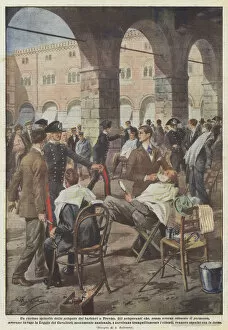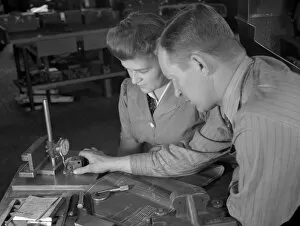Safety Razor Collection
The safety razor has a rich history that spans across time and continents
For sale as Licensed Images
Choose your image, Select your licence and Download the media
The safety razor has a rich history that spans across time and continents. From the curious episode of the barbers strike in Treviso to the vibrant advertisements for Gillette safety razors, this essential grooming tool has left its mark. In Le Vocabulaire Illustre, we see engravings depicting the various components of a safety razor. The razor itself, with its sharp blade ready to provide a clean shave, is complemented by the leather strop used for honing and maintaining its edge. These illustrations showcase the craftsmanship and attention to detail involved in creating these precision instruments. One cannot discuss safety razors without mentioning King Camp Gillette, who revolutionized shaving with his invention of the replaceable blade in 1905. His vision paved the way for an industry that would change not only personal grooming but also contribute to war efforts during World War II. During this tumultuous time, Gillette factories were converted into war production facilities. Women like Estelle Wilson played crucial roles in manufacturing these razors while Charles Taylor worked diligently alongside them. Their dedication ensured that soldiers on the front lines had access to quality shaving tools even amidst global conflict. As we look back at these historical moments captured in photographs from Boston's factory in 1942, we are reminded of how something as seemingly mundane as a they are have far-reaching impacts beyond mere personal hygiene. It symbolizes resilience, innovation, and adaptability – qualities that transcend time and continue to shape our world today. So next time you pick up your trusty safety razor before starting your day or catch sight of an advertisement showcasing sleek designs and promises of smooth shaves – remember its fascinating journey through history. From barbers strikes to wartime production lines, it stands as a testament to human ingenuity and perseverance.













